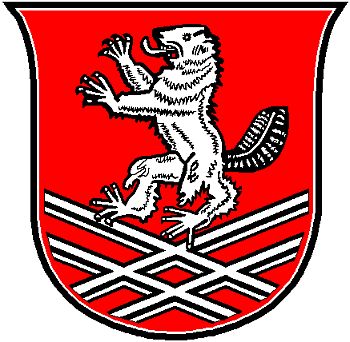Bebra: Difference between revisions
Knorrepoes (talk | contribs) m (Text replacement - "{{media}}" to " {{de1}} {{media1}}") |
Knorrepoes (talk | contribs) m (Text replacement - "{{de}}" to "") |
||
| Line 1: | Line 1: | ||
'''BEBRA''' | '''BEBRA''' | ||
Revision as of 14:14, 26 December 2022
BEBRA
State : Hessen
District (Kreis) : Hersfeld-Rotenburg (until 1973 Rotenburg)
Additions : 1972 Asmushausen, Blankenheim, Braunhausen, Breitenbach, Gilfershausen, Iba, Imshausen, Lüdersdorf, Rautenhausen, Solz, Weiterode
| German |
In Rot einen silbernen, aufrecht stehenden Biber über zwei schräg gekreuzten Schienenpaaren. |
| English | No blazon/translation known. Please click here to send your (heraldic !) blazon or translation |
Origin/meaning
Bebra developed into a large town in the late 19th century as it was situated on some major railway lines. In 1935 Bebra received city rights. As no historical arms were known, the new arms were devised and granted in 1930.
The beaver (Biber) is a canting symbol, the name is derived from Biberahe (or Biberwassser, beaver-water). The lower part of the arms symbolises the importance of the railway lines in the development of the city. The colours are derived from the colours of the Hersfeld Abbey, which ruled the area for many centuries.
Literature: Stadler, 1964-1971, 8 volumes.
